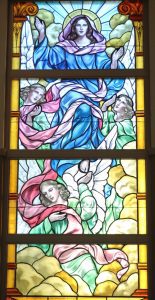“At the conclusion of Her earthly life, the Mother of Christ was raised in soul and body to Heaven, that is, in the glory of eternal life, in full communion with God,” said Pope Francis when describing why on Aug. 15, 2022, the Church celebrates one of the most important feasts dedicated to the Blessed Virgin Mary: the Solemnity of Her Assumption.
 Pope Francis said that “Mary’s Assumption is a great mystery that concerns each one of us; it concerns our future. Mary, in fact, precedes us on the way on which all those go that, through Baptism, have bound their life to Jesus, as Mary bound her life to Him. That one of us dwells in the flesh in Heaven gives us hope: we understand that we are precious, destined to rise again. God does not allow our bodies to vanish into nothing. With God, nothing is lost… It is beautiful to think that the humblest and loftiest creature in history, the first to win heaven with her entire being, in soul and body, lived out her life for the most part within the domestic walls, she lived out her life in the ordinary, in humility.”
Pope Francis said that “Mary’s Assumption is a great mystery that concerns each one of us; it concerns our future. Mary, in fact, precedes us on the way on which all those go that, through Baptism, have bound their life to Jesus, as Mary bound her life to Him. That one of us dwells in the flesh in Heaven gives us hope: we understand that we are precious, destined to rise again. God does not allow our bodies to vanish into nothing. With God, nothing is lost… It is beautiful to think that the humblest and loftiest creature in history, the first to win heaven with her entire being, in soul and body, lived out her life for the most part within the domestic walls, she lived out her life in the ordinary, in humility.”
While the Blessed Virgin has entered into heavenly glory, the Holy Father added that “this does not mean that She is distant or detached from us; the Assumption should bring eternal hope to the faithful… May we not be robbed of hope, because this strength is a grace, a gift from God which carries us forward with our eyes fixed on heaven. Mary is always there… she accompanies them, suffers with them, and sings of hope with them and brings victory over death.”
The Catechism of the Catholic Church describes the Assumption as follows: “The Immaculate Virgin, when the course of her earthly life was finished, was taken up body and soul into heavenly glory, and exalted by the Lord as Queen over all things, so that she might be more fully conformed to her Son, the Lord of lords and conqueror of death.”
This Solemnity of the Assumption of the Blessed Virgin Mary is the oldest celebration of Our Lady. The original celebration, known as the “Memory of Mary” or “Falling Asleep” of Mary for it initially centered on the end of her earthly existence, is commonly known as her “dormition.”
Soon the name was changed to the “Assumption of Mary,” since there was much more to the feast than the end of her earthly life. The belief that Mary had been taken up, body and soul, into heaven dates to the Apostles.
It was clear from the beginning that there were no relics of Mary to be venerated, and that an empty tomb stood on the edge of Jerusalem near the site of the end of her earthly existence or dormition. That location also soon became a place of pilgrimage. (Today, the Benedictine Abbey of the Dormition of Mary stands on the spot.)
In 1950, Pope Pius XII proclaimed the Assumption of Mary a dogma of the Catholic Church, therefore, an ancient belief became Catholic Doctrine and the Assumption was declared a truth revealed by God.
The declaration of the dogma was to “make our belief in our own resurrection stronger and render it more effective,” Pope Pius XII stated in a proclamation.
The proclamation went on to say that the definition of the Assumption “will contribute in no small way to the advantage of human society, since it (reflects and builds up) the glory of the Most Blessed Trinity, to which the Blessed Mother of God is bound by such singular bonds.”
It was also expected that the faithful would be stirred up to a stronger piety toward their heavenly Mother and that those who meditate upon the glorious example Mary offers, be more and more convinced of the value of a human life entirely devoted to carrying out the heavenly Father’s will and to bringing good to others.
Pope Francis said the current devotion the faithful throughout the world have toward the Blessed Virgin confirms the earlier expectations of Pope Pius XII. “We pray to Mary in a particular way, through the Rosary. This prayer brings us closer to the Blessed Mother and to her Son. We join in her suffering and her glory and rejoice looking to eternity and giving us hope that we, too, will follow Our Lady when our life is ended.”
All the feast days of Mary mark the great mysteries of her life and her part in the work of redemption. The central mystery of her life and person is her divine motherhood, celebrated both at Christmas and a week later (Jan. 1) on the feast of the Solemnity of Mary, Mother of God. The Immaculate Conception (Dec. 8) marks the preparation for that motherhood, so that she had the fullness of grace from the first moment of her existence, completely untouched by sin. The Assumption completes God’s work in her since it was not fitting that the flesh that had given life to God himself should ever undergo corruption. (Note: As the Solemnity falls on a Monday in 2022, it is not obligatory to attend Mass.)





